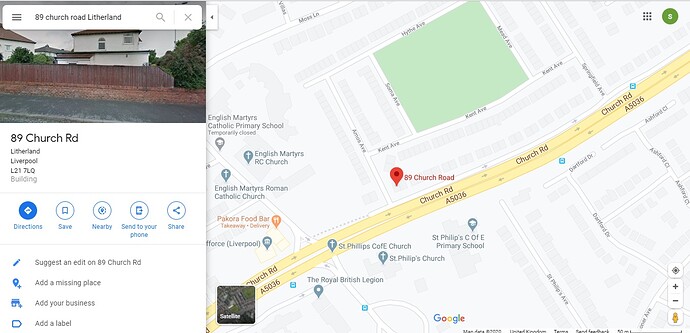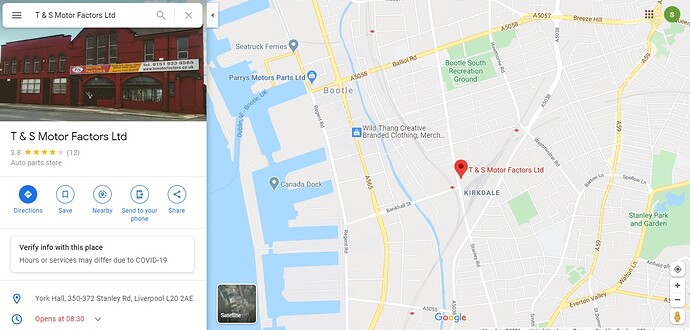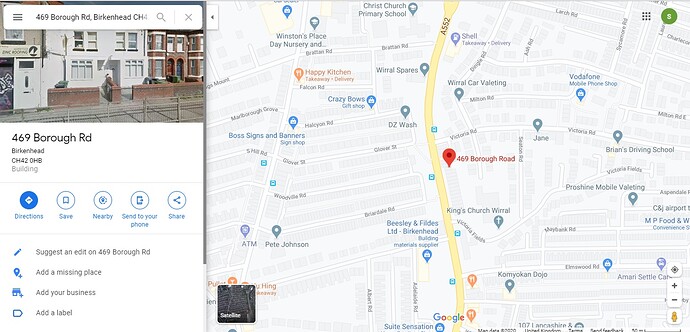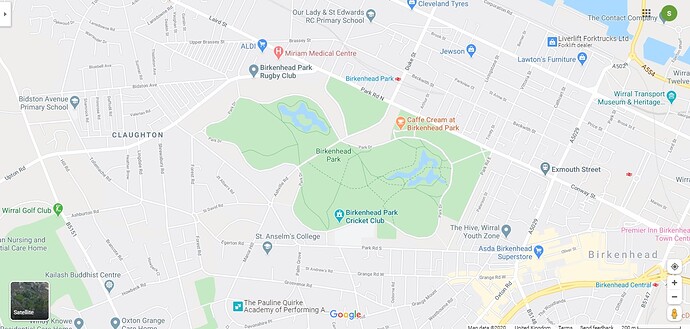I remember now as I saw a Welsh language programme where someone who had lived there all their life (but spoke Welsh) was able to talk about all the connections including, I think, a huge derelict Welsh chapel there. I must visit Liverpool, never been there.
Here’s a fairly mega one, but off the beaten track a bit in really impressive surroundings:
Next to Wall village on Hadrian’s Wall is Heavensfield which was the site of a battle between Welsh and Northumbrian Armies. There’s an information board and finger post there, and ancient church and the Roman wall and vallum (ditch), which did’nt have any significance other than the Geography. There are a few Brithonic place names around as well like Corbridge (previously Coria), Vindolanda (White or sunny Church I think), Lanercost (possibly Augustine’s Llanerch), etc.
There must be many examples like that with lots forgotten about. It’s great to know the history of what took place in different places and the part the Welsh took in it.
There was also a famous battle at Catterick, Yorkshire - Wikipedia says:
Catterick is thought to be the site of the Battle of Catraeth (c. 598) mentioned in the Welsh language poem Y Gododdin . This was fought between Celtic British or Brythonic kingdoms and the Anglo-Saxon kingdom of Bernicia
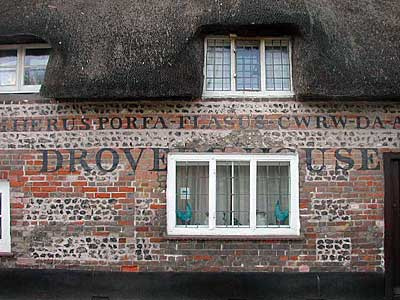
Here’s a photo of the front of the pub.
There’s another interesting connection in Tatsfield, Surrey, which has a Maesmaur Road. This dates back to the mid 14th Century, as explained by Wikipedia:
" During the mid 14th century the manor was held by Rhodri ap Gruffudd, brother of the last native Prince of Wales, and his descendants. Thomas Retherick’s heir was his son Owen, also called ‘de Gales’ (of Wales), who in 1366, during the war with France, left England to join the king’s enemies in that country, and before going likewise released all his right in the reversion of the manor to Roger de Stanyngden and his heirs. Thus in 1392 a grant of the manor of Tatsfield, which was alleged to have been long-concealed, was made by the Crown to John Maudelyn.[[3]]"
The Welsh connection was very brief, but the name of one field ha survived for over 600 years!
That is incredible seeing the Welsh there. I assume it is listed and will always be there for future generations, hopefully.
In the Museum on Liverpool water front there is a whole section on the influence of the welsh in liverpool. Very interesting and I think there is some writing in Welsh : its abnout welsh choirs and Eistedffordd.
A visit to Liverpool definitely sounds worth the trip, never been there, yet.
There’s nothing to say so (no plaques or anything), but I can tell you of a couple of places Hedd Wyn was when he did his army training there - nothing really to see, but a Welsh connection to add to the list!
I am getting very interested in Liverpool now so anything on Hedd Wynn would be great. I assume most of the historic artefacts are in his old house in Wales though.
Yes, most of the artifacts and memorials are in Wales (of course), but there are also a few things abroad in Pilkem where he died and his grave is in Artillery Wood Cemetery there (easy enough to google!). The Liverpool connections are the site of the training camp at Litherland (now a housing estate!) and York Hall (now a car-parts shop!) where he took part in social meetings with his regiment. Also connected with HW (although he didn’t go there) is the house where Eugene van Fleteren carved the “Black Chair” and the Eisteddfod site in Birkenhead as I mentioned before. I’ll dig out the info for you - unfortunately I’ll have to work from memory as my notes are in the office from when I worked on a documentary about him (and we’re all working from home at the moment), so bear with me!
Here we go…
Site of Litherland Training Camp:
York Hall:
Van Fleteren’s workshop:
Site of 1917 Eisteddfod - Birkenhead Park:
And while we’re in Liverpool, and while I remember, there’s a plaque to the ‘Mimosa’ - the ship that took the first Welsh settlers to Patagonia in 1865 - on Princess Dock. 
Has anybody mentioned yet the new book by D Ben Rees, The Welsh in Liverpool - A Remarkable History? http://www.gwales.com/bibliographic/?isbn=9781912631360&tsid=1
Liverpool here I come - post Covid!
Lichfield Cathedral (Staffordshire) contains the St Chad Gospels which contain notes in the margins which are some of the earliest surviving examples of Welsh. https://www.lichfield-cathedral.org/visit-the-cathedral/cathedral-treasures
Coventry has a Welsh Presbyterian Church with the sign outside mainly in Welsh https://www.waymarking.com/gallery/image.aspx?f=1&guid=c49fd004-eb50-4ac5-b4a2-00f307035c4e&gid=3
Both great examples though I would never have expected the first one in Lichfield.
Don’t forget the Welsh streets in Liverpool. Its a block of, I think, six streets in Liverpool with Welsh links. Richard Starkey, aka Ringo Starr of The Beatles, was brought up there. The streets have been under threat of demolition but I think there’s been a change of heart.
I am sure I saw a picture of them done up with a mural at the end.
